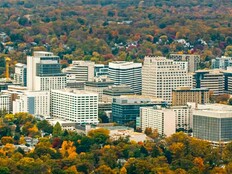Corona Embraced AI Experiments to Fortify Employees
In Corona, Calif., CIO Chris McMasters said the city began its AI journey by confronting a simple reality: Staff were already using AI tools, whether or not IT had set formal rules.
“Governance is probably the first and foundational thing you have to do,” McMasters said. “We work with all of the departments to understand who owns the data, and to secure the data, making sure the data is clean. Start with governance — that’s where you need to start. Because once you unleash AI in your organization, it really doesn’t have any bias. It goes wherever it wants to.”
McMasters compared today’s debate over AI with the early days of social media in government, when many agencies tried to block platforms outright instead of treating them as new channels to reach residents.
“AI is being used whether you like it or not,” he said. “Whether or not we have policies, whether or not we’re locking things down, your employees are using it — at home, on the phone, somewhere. Use that to understand the use cases, and use it to spur innovation.”
Corona surveyed its workforce to understand how widely employees were already experimenting with AI and what worried them about it. The results surprised city leaders, McMasters said.
“We found that 1 in 4 employees were already using AI, and 1 in 8 were using it on a consistent basis,” he said. “Only about 2% were afraid of AI taking their job, which we found really fascinating.”
Based on that feedback, Corona built training programs and partnered with startups to develop a security platform that enforces AI policies automatically. An agent on each city device can block staff from entering sensitive information (such as Social Security numbers) into AI tools, McMasters said, allowing workers to experiment without memorizing long policy documents.
“The idea behind it was not just the control factor,” he said. “It was really so that employees could use AI and not be worried so much about my 10-page AI policy. It’s just in the active background.”
READ MORE: State and local governments harness AI to improve services.
Hartford Established Guardrails and Then Deployed AI
Snipes said Hartford followed a similar path by first deploying AI-enabled protections in email and building on existing AI uses in public safety, then expanded access to more staff alongside training and guardrails.
“Now we’re putting it in every employee’s hand, and it’s scary,” she said. “So, we’re going to have safeguards in place — this is how you’re using it, don’t use it for this, don’t use it for that — and training sessions, one-on-one training sessions. AI is like when smart technology came out. Now AI is built into everything. It’s here whether you like it or not.”
Both officials said they remain optimistic but cautious about AI’s long-term impact. Snipes is focused on responsible use and the ability of city leaders to maintain visibility into how automated systems make decisions.
“I’m curious to see where we’re going to be two years from now — the return on investment, making sure that it is being used responsibly,” she said. “Let’s pump the brakes, but let’s just make sure that we’re doing this responsibly.”
McMasters framed the current moment as a rare chance for government to rethink how it operates.
“Uncertainty is opportunity,” he said. “We’re in a very uncertain time, and there is a huge opportunity to innovate and change the way government runs. If our most valuable asset is our human employees, how do we capitalize on that? If we rid ourselves of the mundane things we do in government, it unleashes the human capital. This is one of those moments in time where we can really, really change things and make them better.”











